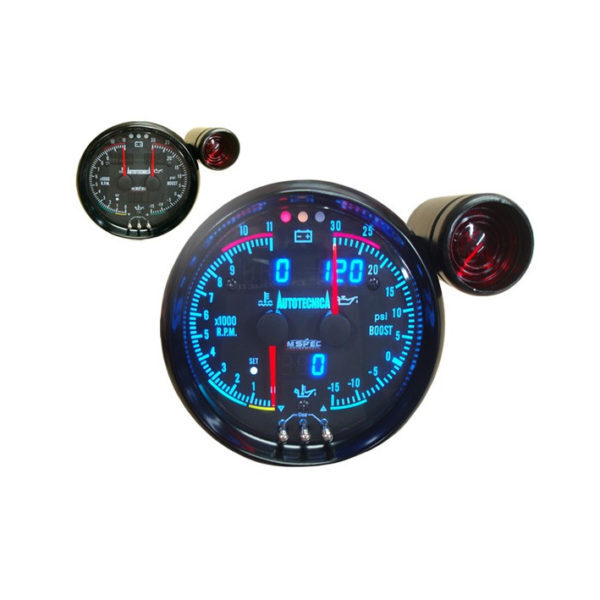Tachometer Fundamentals: Everything You Required to Know for Accurate Readings
Tachometer Fundamentals: Everything You Required to Know for Accurate Readings
Blog Article
Exploring the Functions and Benefits of a Tachometer: A Comprehensive Guide for Cars And Truck Fanatics
In the world of auto instrumentation, the tachometer stands as an essential device that provides chauffeurs valuable insights right into their car's performance. tachometer. From giving real-time data on engine rate to helping in enhancing gear changes, the tachometer acts as even more than simply a dial on the dashboard. Its diverse features not just boost driving experience however additionally play a crucial role in preserving engine health and wellness and efficiency. As we dig right into the elaborate operations and advantages of a tachometer, a deeper understanding of its significance for automobile fanatics and specialists alike will certainly unravel.
Comprehending the Essentials of a Tachometer
In the realm of automobile instrumentation, comprehending the fundamentals of a tachometer is crucial for any car enthusiast wanting to explore the ins and outs of engine performance surveillance. A tachometer, frequently presented on the dashboard of a lorry, measures the engine's changes per min (RPM) This vital tool supplies real-time data on how fast the engine crankshaft is revolving. By monitoring the RPM, vehicle drivers can guarantee they are operating within the optimum range to maximize performance and efficiency.
Tachometers generally have actually a scale noted in revolutions per minute, with a redline suggesting the maximum rate at which the engine can securely run (tachometer). This details is essential for protecting against engine damages and enhancing gear changing for hand-operated transmissions. In addition, tachometers can help in identifying engine problems such as misfires or a stopping working ignition system by identifying uneven RPM analyses
Importance of Keeping Track Of Engine Speed

The engine rate, measured in revolutions per minute (RPM), suggests just how fast the engine's crankshaft is revolving. Keeping track of engine speed is specifically critical during equipment changes, as it helps chauffeurs identify the right time to transform equipments for smooth velocity and reliable fuel consumption.
In addition, tracking engine speed can likewise offer valuable understandings right into the general health of the car. Overall, keeping an eye on engine speed with a tachometer is a basic technique that can improve driving efficiency, lengthen engine life, and guarantee a more secure and extra delightful driving experience.
Enhancing Performance Through Equipment Shifts
Maximizing performance with critical gear shifts is an essential facet of maximizing an automobile's performance and important link power output. Correct gear moving ensures that the engine operates within its optimum power band, enabling smooth acceleration and enhanced gas economy. When shifting equipments, it is essential to take notice of the engine rate showed on the tachometer. By keeping an eye on the engine transformations per minute (RPM), vehicle drivers can determine one of the most appropriate minutes to upshift or downshift for ideal performance.

To achieve peak performance via equipment shifts, vehicle drivers should practice smooth and prompt shifts between gears, matching engine speed with roadway speed to harness the full capacity of their lorry's powertrain.
Taking Full Advantage Of Effectiveness With a Tachometer
Understanding the art of gear moving in high-performance automobiles not only improves driving experience but additionally plays a crucial duty in making best use of effectiveness with a tachometer. tachometer. By paying attention to the tachometer analyses, chauffeurs can optimize their gear shifts to run within the engine's most effective range. When speeding up, changing gears at the best RPM indicated by the tachometer can stop the engine from overworking or underperforming, causing boosted fuel efficiency and total efficiency
Furthermore, a tachometer aids drivers avoid unneeded revving, which not only throws away fuel however additionally places unnecessary strain on the engine. Constantly monitoring the tachometer while driving enables for smoother equipment shifts, reducing this article damage on the transmission system in time.

Advanced Tips for Tachometer Use
To dig into innovative pointers for tachometer utilization, take into consideration incorporating the use of change lights. Shift lights are visual signs that light up when it's time to shift gears based on Source engine transformations per min (RPM), permitting for smooth gear adjustments without constantly keeping an eye on the tachometer. By fine-tuning change points and setting alerting thresholds, chauffeurs can enhance velocity and engine efficiency while lessening the danger of over-revving.
Verdict
Finally, the tachometer offers as an important tool for car lovers to monitor engine speed, improve efficiency through gear shifts, and make the most of efficiency. By recognizing the functions and benefits of a tachometer, vehicle drivers can enhance their driving experience and prolong the life-span of their lorry. Utilizing innovative suggestions for tachometer utilization can further enhance driving abilities and total performance on the roadway.
Report this page